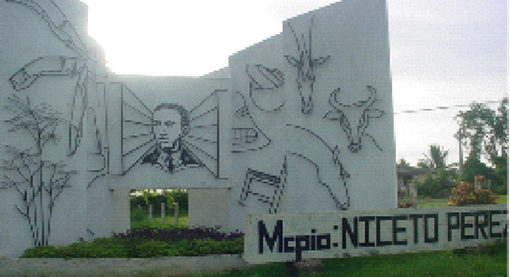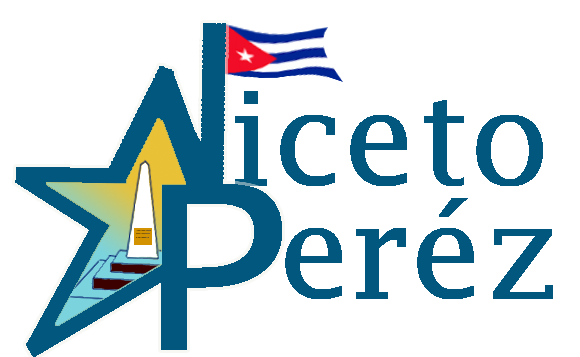 The name of the municipality represents a tribute to the peasant martyr Niceto Pérez García who was assassinated in the place known by El alto de María Luisa near Filipina on May 17, 1946 while he was tilling the land by agents at the service of the geophagous Lino Mancebo Rossell, reason by which the first Agrarian Reform Law is signed on a date like this and the farmer's day is celebrated.
The name of the municipality represents a tribute to the peasant martyr Niceto Pérez García who was assassinated in the place known by El alto de María Luisa near Filipina on May 17, 1946 while he was tilling the land by agents at the service of the geophagous Lino Mancebo Rossell, reason by which the first Agrarian Reform Law is signed on a date like this and the farmer's day is celebrated.
Before the revolutionary triumph of January 1, 1959, the territory was an abandoned area of large tracts of land formed by the San Andrés farm in the hands of Mister Sham with around 2000 caballerias dedicated basically to livestock and the Mancebos large estate with the The Casimba and Filipina Sites area basically dedicated to the cultivation of coffee and tobacco, due to its rich historical history, there are other places in the municipality as well as a monument of national interest.
The current municipality was established as a result of the new administrative political division in 1976. It is a merger of the municipalities of Casimba and Vilorio, its territorial extension of 639.74 square km represents 10.37% of the Guantánamo province, being agricultural 16.2% of its land, its varied relief is made up of valleys, the Sierra de Canasta and the mountain range located in the Great Sierra Maestra National Park with 282 square km of the 304 square km of the total, its predominant height is in Sierra Larga near the town of San Román with 778 meters, stand out for its geological interests Los Monitongos on the south coast, the La Yaya dam with more than 160 million cubic meters of water also has the main aquifer source in our province the province's aquaculture tank used for irrigation, human consumption, fishing and that could be exploited for tourist purposes through recreation bases, rest houses, and a nautical base in different time of the year likewise its rivers can be a source of bases for popular camping and other ideas.
Among the main population centers, the Yaya, Vilorio, El Silencio, Ulloa, Casimba, Atibonico, El Descanso and others that are part of its 6 Popular Councils stand out.
Despite the fact that there are few industries that only produce bread and groceries, the companies Agroindustrial del Grano, Pecuarias Iván Rodríguez and Comercio Mixta are located here, fruit crops are abundant, highlighting that of mangoes and pineapples, the periodic organizations of agricultural fairs, commercials, rodeos, horse racing, etc. They contribute to the incentive of the economy because they own, as we have already mentioned, a livestock farm, raising pony horses and race horses on the farm of the Flora and Fauna Company.
The work in the rescue of beekeeping not only in its mountainous regions, the cultivation of rice and potatoes in the lower areas, the rescue of the cultivation of white yam and taro in places that the climate allows, the efficiencies in their supplies because numerous mainly mountain productions go to the Santiago de Cuba provinces and others are lost both in the fields or after being collected will contribute to further development of the municipality.





- You should not use obscene or offensive words.
- Comments should be related to the topic.
- Comments that violate previous policies will not be posted.